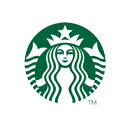
Starbucks
Seattle, Washington, U.S.Founding:
Founders: Jerry Baldwin, Zev Siegl, and Gordon Bowker founded Starbucks in 1971 in Seattle, initially as a retailer of high-quality coffee beans and equipment.
The name "Starbucks" was inspired by the first mate in Herman Melville's "Moby Dick."
Early on, Starbucks was primarily a coffee bean roaster and retailer, with a single store in Seattle's Pike Place Market.
Milestones:
1980s Expansion: Under Howard Schultz's leadership, Starbucks shifted its focus to selling brewed coffee. It expanded aggressively in the late 1980s and early 1990s, opening stores across the United States.
1990s Global Expansion: The 1990s saw Starbucks go international, opening stores in Japan, the UK, and other countries.
Digital Innovations: Embracing technology, Starbucks launched its mobile app in 2011, enabling customers to order ahead and pay using their smartphones.
Expansion into Other Products: Diversification beyond coffee into teas, snacks, merchandise, and partnerships with brands like Teavana and Evolution Fresh.
Evolution:
Community Space: Starbucks stores became synonymous with a "third place" between home and work, fostering community and social interaction.
Ethical Sourcing: The company emphasized ethical sourcing of coffee beans and sustainability initiatives, elevating its brand image.
Café Experience: Starbucks focused on providing an upscale café experience, emphasizing comfort, and consistency across locations.
Cultural Context:
Coffee Culture Shift: Starbucks played a significant role in popularizing and normalizing gourmet coffee and the café culture globally.
Brand Image: Positioned as a premium coffee experience, Starbucks embodied an aspirational lifestyle and social status for many consumers.
Positioning & Brand Values:
Quality & Experience: Emphasized premium quality coffee and a cozy, welcoming atmosphere.
Community Engagement: Engaged in various social responsibility initiatives, including fair trade, environmental sustainability, and employee benefits.
Product Design:
Store Ambience: Starbucks focused on creating a warm, inviting atmosphere with comfortable seating and soothing music.
Customization: Introduced a wide variety of customizable drinks to cater to diverse tastes.
Visual Evolution:
Logo Changes: The iconic green and white siren logo evolved over the years, from a detailed design to a simplified, cleaner version.
Successes and Challenges:
Successes: Global expansion, brand recognition, digital innovations, customer loyalty, and consistent revenue growth.
Challenges: Saturation in certain markets, controversies, and competition in the coffee and specialty beverage market.
Controversies:
Labor Practices: Starbucks faced criticism for its treatment of workers and accusations of anti-union practices.
Cultural Appropriation: Issues arose around cultural appropriation in some marketing campaigns.
Product Range:
Core Offerings: Coffees, teas, pastries, sandwiches, and various seasonal beverages.
Diversification: Expanded product lines to include bottled beverages, packaged goods, and branded merchandise.
Competitors in Different Segments:
Coffee Chains: Competitors include Dunkin' Donuts, Costa Coffee, and Tim Hortons.
Specialty Coffee: Competes with independent cafés and artisanal coffee shops.
Revenue Streams & Financials:
Multiple Revenue Streams: Generated revenue from retail sales, licensing, consumer packaged goods, and partnerships.
Financial Growth: Steady revenue growth with occasional fluctuations due to market changes and global economic factors.
- Other Brands
- Apple
- Microsoft
- Amazon
- Google
- Samsung
- Toyota
- Mercedes-Benz
- Coca-Cola
- Nike
- BMW
- McDonald’s
- Tesla
- Disney
- Louis Vuitton
- Cisco
- Instagram
- Adobe
- IBM
- Oracle
- SAP
- Facebook
- Chanel
- Hermes Paris
- Intel
- YouTube
- JP Morgan
- Honda
- American Express
- Ikea
- Accenture
- Allianz
- Hyundai
- UPS
- Gucci
- Pepsi
- Sony
- Visa
- Salesforce
- Netflix
- PayPal
- Mastercard
- Adidas
- ZARA
- AXA
- Audi
- airbnb
- Porsche
- Starbucks
- GE
- Volkswagen
- Ford
- Nescafe
- Siemens
- Goldman Sachs
- Pampers